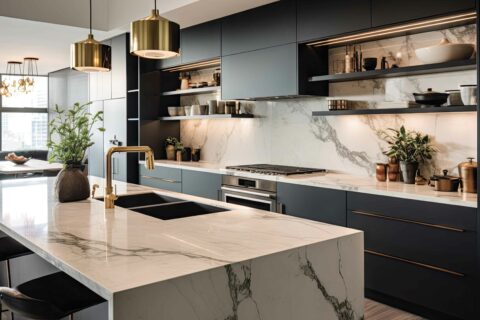October 29, 2021 • Buying
The Low-Down on Low Rates
By Kate Barker with Shannon Hendrikse, Accredited Mortgage Professional and Owner of Canmore Broker Inc.
Rate isn’t everything when it comes to a mortgage.
When looking for a mortgage to buy your next property, it’s easy to get caught up in interest rates. What’s the lowest rate available? How can I save the most money on this purchase? But those two questions don’t always have the same answer. “What’s in your best interest is more than just the interest!” says Shannon Hendrikse, Accredited Mortgage Professional and Owner of Canmore Broker Inc, “It’s a matter of comparing all the factors in the mortgage.”
While rate is important, there are other factors that could influence which mortgage is a good deal for you. Some other pieces to consider are the total dollar value of your purchase, your down payment, and whether or not you’re planning to rent the property. These all affect what type of mortgage you can get, and what features you should be looking for. Your amortization schedule also plays a huge role in what’s best for you. While a 25-year amortization schedule will typically have a better rate than a 30-year one, the lower payments over the longer period of time may actually be better for your situation and may allow you to still live your life while paying off your home.
“It’s important to remember that mortgages are products,” says Hendrikse, “Rate is one piece of it, but the terms are another huge piece that shouldn’t be overlooked.”
Often rock-bottom rates come with very restrictive terms that don’t allow you to make changes, refinance or make prepayments to pay off your mortgage faster. One of the best ways to save interest is to use prepayment options. These extra payments go towards your principle, and they can save you thousands in interest in the long run. Many mortgages with rock-bottom rates have little to no room for prepayments, while some even come with a bonified sale clause, which essentially means the lender restricts you from refinancing the mortgage and the only way out of this deal is to sell the home.
Hendrikse says it’s really important to have flexibility within your mortgage contract because life can change a lot in the 5 years of your first term. “Statistically, 70% of people break their mortgage by year 3,” Hendrikse says, “That can look like moving houses, refinancing, or general life events interrupting your ability to pay out your mortgage term.” It’s important to have the flexibility to handle what life throws at you while paying out your mortgage.
Another factor to consider is rate going in vs rate going out. If you had an excellent rate 10 years ago, it won’t look so great compared to the rock bottom interest rates we’re seeing right now because of the pandemic. If you decide to break your mortgage contract to take advantage of these new, low rates, you might incur a penalty that makes this move more expensive in the long run. Hendrikse says, “Some of the penalties we’re seeing are between $20-$30 thousand. Do your savings compensate for the penalty you’ll incur?”
It’s also important to shop around and look at different options and different types of lenders. “There’s a big difference between banks and monoline lenders,” says Hendrikse. It’s important to know what your options are, and what those differences mean for you. While banks and credit unions have large teams of people supporting everything to do with your finances, monoline lenders only lend money for mortgages, which means they can sometimes come with lower penalties, great rates and easy transfers.
“Most people spend more time choosing the right car than choosing the right mortgage.”
Don’t be afraid to shop around. Working with a professional will help you to look at all facets of a mortgage, such as refinancing penalties, fixed vs variable rates, term, prepayment options, payment flexibility, restrictions, fees, portability and assumability.
It’s important to ask questions. A house is likely one of the most expensive things you’ll purchase in a lifetime, so don’t rush finding the right mortgage. Treat your mortgage like any other large product you’d like to purchase and shop around. Talk to a neutral third party for different opinions about what’s available to you, and explore what the ideal combination of rates, terms and conditions are best for your individual circumstances. At the end of the day, you want a mortgage that’s custom-built for your personal situation.
Fun Fact:
Typically the best rates are available for insured purchases. By insuring your mortgage, the lender knows there is less risk for them and they are more willing to give you a great rate. You need to factor insurance premiums into this calculation, however, to make sure you’re getting the best deal. If you have over 35% equity or down payment, you can often get the same rate as an insured mortgage.



